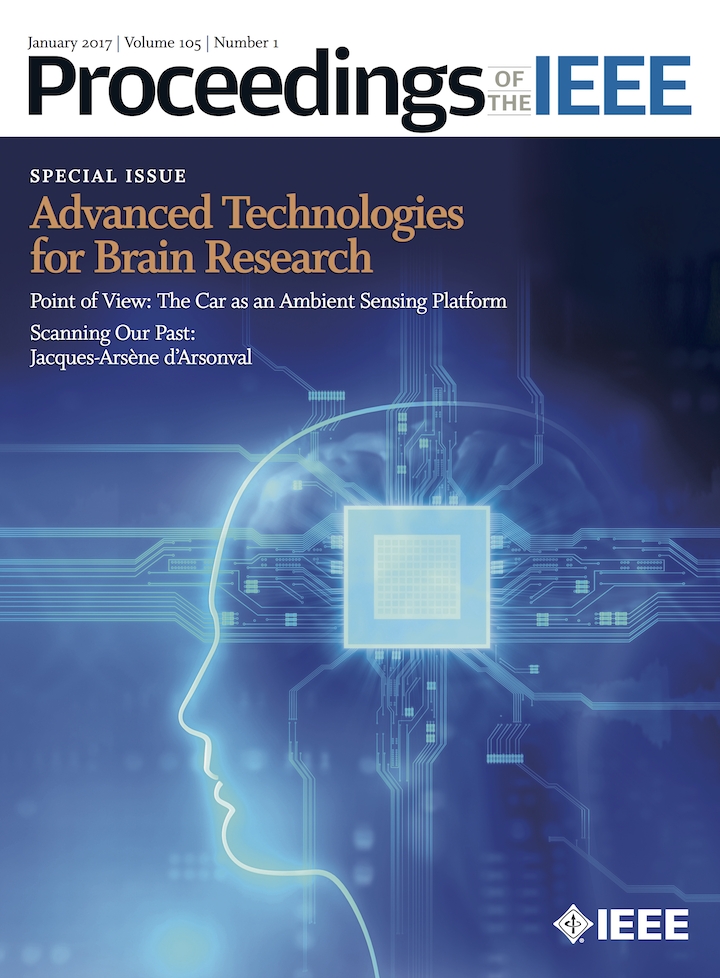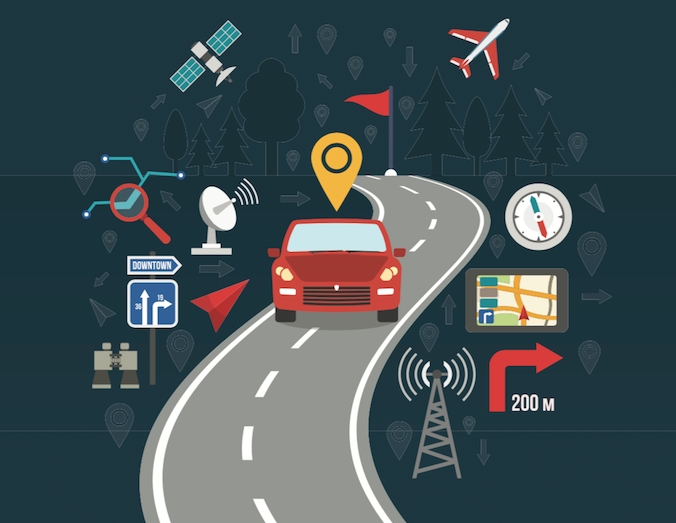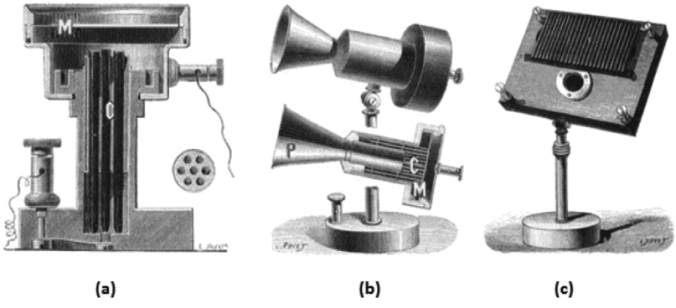2017 Journal Issues January 1, 2017


Special Issue: Advanced Technologies for Brain Research
Volume 105, Issue 1
January 2017
Guest Editors




Special Issue Papers
By M. Akay, P. Sajda, S. Micera, and J. M. Carmena
By S. Ha, A. Akinin, J. Park, C. Kim, H. Wang, C. Maier, P. P. Mercier, and G. Cauwenberghs
This paper examines the state of the art of chronically implantable electrocorticography (ECoG) interface systems and introduces a novel modular ECoG system using an encapsulated neural interfacing acquisition chip (ENIAC) that allows for improved, broad coverage in an area of high spatiotemporal resolution.
By S. Raspopovic, F. M. Petrini, M. Zelechowski, and G. Valle
This paper focuses on a novel, less invasive or intrusive neural prosthesis design by optimizing the neural interface geometry and the number of stimulating contacts for any specific nerve.
By Y. M. Dweiri, T. E. Eggers, L. E. Gonzalez-Reyes, J. Drain, G. A. McCallum, and D. M. Durand
This paper emphasizes the need for intuitive control of high-degree-of-freedom prosthetic limbs and proposes a detection method for fascicular-level neural activity under freely moving conditions that avoids compromising the peripheral nerves by using flat interface nerve electrodes (FINE).
By P. Nuyujukian, J. C. Kao, S. I. Ryu, and K. V. Shenoy
This paper discusses the feasibility of using brain–computer interfaces (BCIs) as communication interfaces for communication neural prostheses, and compares two high-performing BCI decoders in a typing task simulation.
By M. M. Maharbiz, R. Muller, E. Alon, J. M. Rabaey, and J. M. Carmena
This paper discusses recent advances in neurotechnology developed at Berkeley, including ultrasmall, ultracompliant implantable recording technology, as well as active devices which enable RF coupling, front-end amplification, and transcranial communication.
By J. Muraskin, J. Sherwin, G. Lieberman, J. O. Garcia, T. Verstynen, J. M. Vettel, and P. Sajda
This paper investigates brain behavior relationships using novel machine learning methodologies and neuroimaging technologies.
By M. T. Alt, E. Fiedler, L. Rudmann, J. S. Ordonez, P. Ruther, and T. Stieglitz
This paper provides an overview of optoprobe technology and its application to chronic neural implants. It also provides a previously undefined context of the state of the art of customized optoprobes for optical neural interfaces.
By S. R. Schultz, C. S. Copeland, A. J. Foust, P. Quicke, and R. Schick
This paper provides an overview of recent advances in neural circuit imaging technologies, including the resulting technical challenges of signal processing and data analysis tools.
By J. Ohta, Y. Ohta, H. Takehara, T. Noda, K. Sasagawa, T. Tokuda, M. Haruta, T. Kobayashi, Y. M. Akay, and M. Akay
This paper discusses three categories of implantable microimaging devices for observing small animal brain activity and highlights the ultrasmall image sensor category for its ability to explore deep brain activity under freely moving conditions.
Point of View
By E. Massaro, C. Ahn, C. Ratti, P. Santi, R. Stahlmann, A. Lambrecht, M. Roehder, and M. Huber


3 Comments
Comments are closed.